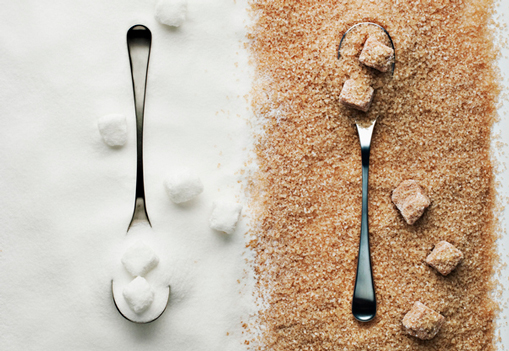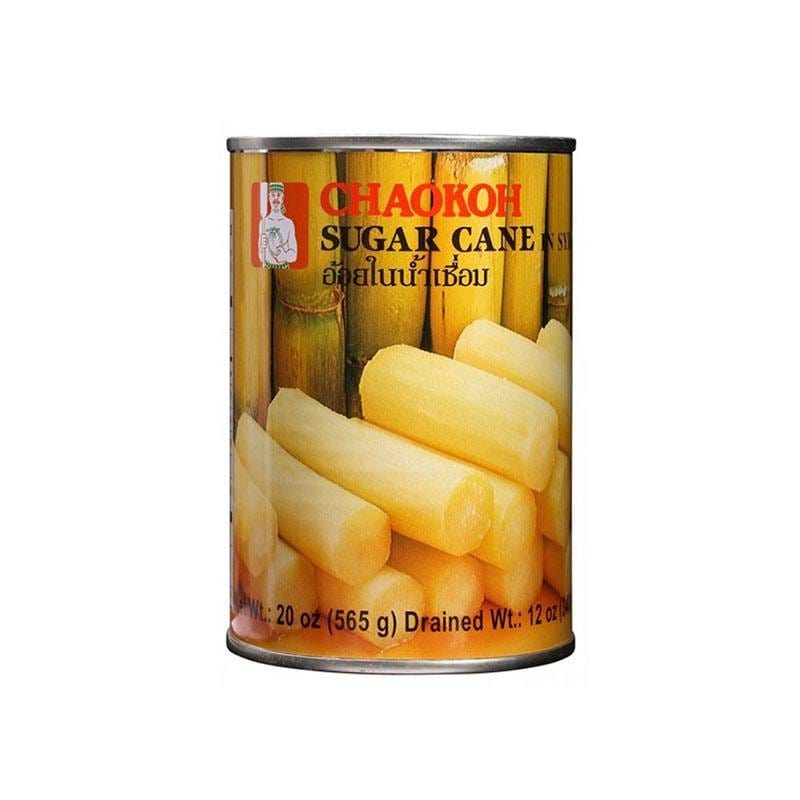Is Sugar Cane the Key to the Next Generation Green Energy?
Wiki Article
Unveiling the Manufacturing Keys Behind Sugar Cane and Its Diverse Variety Of Products
The manufacturing trip of sugar cane is elaborate and multi-faceted. It starts in the fields, where mindful harvesting methods established the stage for perfect sugar removal. The process includes numerous stages, consisting of juice removal and refining - sugar cane products. Sugar cane's possible prolongs much past simple sweet taste. Developments in handling and lasting practices are reshaping its function in modern-day industries. What lies in advance for this functional crop? The responses might stun those thinking about its futureThe Trip of Sugar Cane: From Field to Factory

As sugar cane guides carefully in the exotic wind, it starts a transformative trip from field to manufacturing facility. The vibrant eco-friendly stalks, rich in sucrose, are grown under ideal conditions, taking advantage of adequate sunshine and rainfall. Farmers very carefully monitor the development, making certain the plants reach their peak maturity, which is essential for making the most of sugar content.Once developed, the cane is gotten ready for harvesting, where its coarse framework holds the guarantee of pleasant items. The journey proceeds as the stalks are transferred to processing facilities, where they undergo a collection of meticulous actions. At the manufacturing facility, the cane is cleaned, shredded, and pressed to draw out the juice. This juice is then clarified and evaporated, leading the way for formation. Each phase of this trip is essential, as it inevitably determines the quality of the sugar and other items stemmed from this versatile plant.
Collecting Methods: The Very First Step in Production
Collecting sugar cane needs precision and ability, as the timing and method directly impact the quality of the end product. The process normally begins with establishing the excellent harvest, which is important; sugar content comes to a head prior to the plant reaches complete maturation. Growers commonly depend on experience and agricultural indications to make a decision when to harvest.Two primary techniques control the harvesting landscape: guidebook and mechanical techniques. Hands-on harvesting, though labor-intensive, allows for mindful selection of stalks and decreases damage. Employees use machetes to cut the cane near the base, making sure the stalks stay undamaged for processing.Mechanical harvesting, on the other hand, makes use of specialized tools to cut and gather the cane quickly. While this technique greatly enhances effectiveness, it may lead to higher levels of debris and reduced sugar material. Ultimately, the selected strategy influences not only the quantity however additionally the quality of sugar cane provided to refining facilities.The Extraction Refine: Opening the Sweet taste
The extraction process is crucial for transforming collected sugar cane into wonderful juice. Various methods of juice extraction can significantly influence the top quality and return of the last product. Recognizing these techniques is crucial for optimizing the advantages of sugar cane production.Gathering Methods Clarified
Launching the sweet taste of sugar cane starts with precise harvesting techniques that guarantee optimal yield and high quality. The procedure usually includes reducing the cane at ground level, making sure marginal damages to the plant and permitting for regrowth. Farmers usually make use of machetes or specialized machines, relying on the range of the procedure. Timing is essential; collecting takes place when the sugar web content reaches its peak, usually throughout completely dry periods. Furthermore, employees have to be educated to recognize the ideal stalks, staying clear of those that are also old or infected. Effective transportation to processing facilities is additionally crucial, as hold-ups can cause sugar degradation (sugar cane products). These precise techniques inevitably lay the structure for creating high-grade sugar and its varied spin-offsJuice Extraction Approaches
Juice extraction is an important step in changing sugar cane right into its sweet significance. This procedure normally includes numerous techniques, each developed to efficiently extract the sweet fluid from the coarse stalks. One of the most common technique is milling, where the sugar cane is crushed in between heavy rollers to launch the juice. Another technique is diffusion, which uses warm water to liquify the sugar from the cane fibers, making it an extra reliable choice for large-scale procedures. Additionally, some manufacturers utilize screw presses, which use mechanical pressure to remove juice. After extraction, the juice undertakes information to remove pollutants before additional handling. Each method mirrors the industry's concentrate on taking full advantage of return and making certain premium sugar production.Refining Sugar: Transforming Raw Cane Into Granulated Gold
The refining procedure is necessary for converting raw cane sugar into the pure, granulated item customers identify. sugar cane products. This includes a series of removal and purification actions to eliminate impurities, adhered to by crystallization and drying out techniques that improve the sugar's top quality. Understanding these techniques discloses the detailed change from cane to the gold granules that sweeten countless foods and beveragesExtraction and Filtering Refine
A crucial stage in the sugar manufacturing their website trip entails the removal and purification of juice from freshly harvested sugar cane. This process begins with crushing the cane to release its wonderful juice, normally making use of huge rollers or mills. The extracted juice includes not only sugar however likewise contaminations, consisting of fibers and mud. To assure the juice appropriates for more refining, it undertakes a purification process. This includes passing the juice via various filters and clarifiers to remove solid bits and unwanted materials. Chemicals such as lime may be contributed to help in the information procedure. The outcome is a clear, raw cane juice that functions as the foundation for producing refined sugar, prepared for subsequent stages of processing.
Formation and Drying Techniques
After the removal and filtering processes yield clear raw cane juice, the following step in sugar manufacturing is condensation. This procedure includes steaming the juice to evaporate water, permitting sugar molecules to develop crystals. As the liquid thickens, it reaches supersaturation, triggering sugar to take shape. The mixture is after that cooled, promoting further crystal development. As soon as crystallization is full, the sugar crystals are separated from the continuing to be syrup with click here for info centrifugation.The last entails drying, where the crystals are revealed to warm air to get rid of recurring moisture. This action is crucial, as it ensures the item accomplishes the desired granulation and rack stability. The outcome is pure, granulated sugar, ready for product packaging and distribution.Past Sweetness: Diverse Products From Sugar Cane
While sugar cane is mostly identified for its sweet flavor, its convenience extends much past mere sweetness. This durable plant works as the resource for a myriad of products that accommodate varied industries. Ethanol, derived from sugar cane fermentation, plays a vital function in renewable resource, working as a cleaner option to fossil gas. Additionally, molasses, a byproduct of sugar refining, is utilized in animal feed, as well as in baking and fermentation processes.Sugar cane's coarse deposit, known as bagasse, is not squandered; it is changed right into eco-friendly product packaging materials and works as a biomass fuel source. Moreover, numerous sugars and syrups gotten from sugar cane locate applications in the food and drink field, adding to flavor and conservation. The plant's fallen leaves can be utilized for thatching, while its juice is taken in as a rejuvenating drink in numerous cultures. Sugar cane exhibits farming possibility past its sugary credibility.Developments in Sugar Cane Handling
As improvements in technology proceed to reshape numerous markets, sugar cane handling is experiencing a significant change. Modern innovations, consisting of automated harvesting and precision agriculture, are enhancing effectiveness and return. Drones and sensors keep track of crop wellness, allowing farmers to enhance watering and nutrient application, ultimately boosting productivity.In handling facilities, cutting edge equipment and tools improve operations. Technologies such as enzymatic processing and progressed filtration methods improve the extraction of sugar while lessening waste. In addition, the adoption of real-time information analytics enables makers to keep track of processes closely, ensuring quality assurance and go now lowering downtime.Biotechnology is also playing an essential role; genetic engineerings enhance sugar cane's resistance to insects and ecological stress factors. These innovations not only add to higher sugar yields yet also help with the manufacturing of diverse byproducts from the cane, increasing its industrial applications. Overall, these advancements are leading the way for an extra efficient and sustainable sugar cane processing industry.The Future of Sugar Cane: Sustainability and Bioproducts
The future of sugar cane manufacturing is progressively intertwined with sustainability and the advancement of bioproducts. As worldwide demand for green choices climbs, the sugar cane sector is rotating towards methods that reduce environmental impact. Innovations in farming strategies, such as accuracy agriculture and integrated pest management, aim to boost return while reducing source consumption.Furthermore, sugar cane is being discovered as a raw material for biofuels, bioplastics, and other lasting items. These bioproducts not only offer a renewable alternative to standard fossil fuels and plastics but also add to a round economic situation by using waste materials.Research and advancement in biotechnology are leading the way for improved sugar cane varieties that require much less water and plant foods, better promoting sustainability. By accepting these innovations, the sugar cane market can secure its future while resolving vital environmental obstacles, demonstrating its possible as a foundation of sustainable development.
Regularly Asked Concerns
What Are the Environmental Effects of Sugar Cane Farming?
The environmental effects of sugar cane farming include logging, soil deterioration, and water pollution. Furthermore, the usage of chemicals can damage biodiversity, while monoculture methods reduce ecosystem durability, presenting long-term sustainability difficulties for farming methods.
How Does Sugar Cane Compare to Other Sweeteners Nutritionally?
Sugar cane, rich in carbohydrates, provides energy yet does not have necessary nutrients compared to options like honey or syrup, which offer minerals and vitamins. Its high glycemic index also increases problems over blood sugar level spikes.What Are the Wellness Benefits of Consuming Sugar Cane Products?
The health benefits of consuming sugar cane items consist of boosted food digestion, boosted power levels, and prospective antioxidant residential or commercial properties. Furthermore, they may support hydration and provide essential vitamins and minerals, adding favorably to general wellness.How Is Sugar Cane Waste Utilized After Processing?
After handling, sugar cane waste is utilized in numerous methods, including biofuel production, animal feed, and organic plant foods. This lasting method reduces ecological influence while maximizing source performance within the sugar market.What Are the Historical Beginnings of Sugar Cane Growing?

Report this wiki page